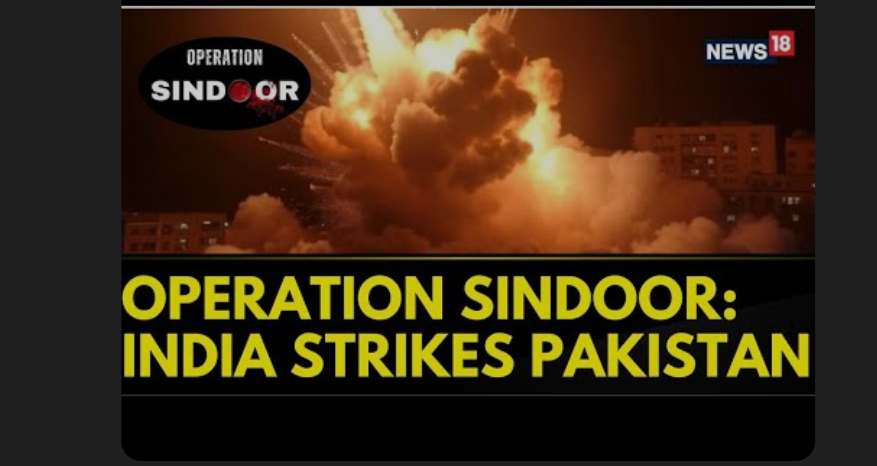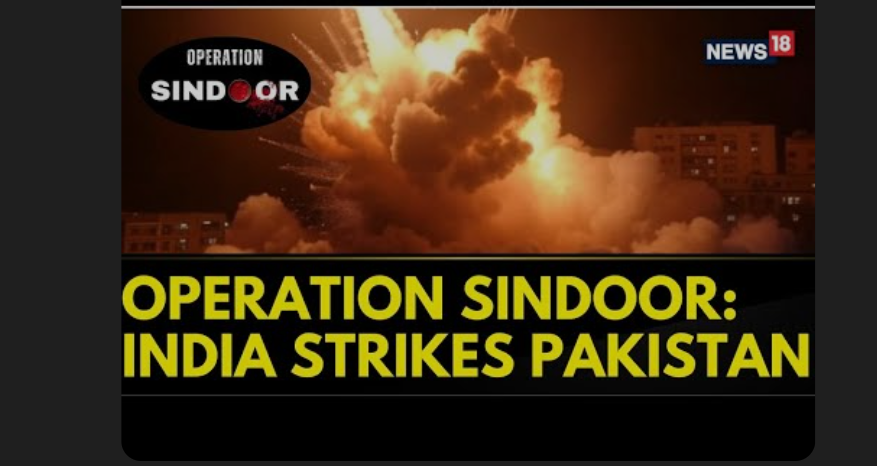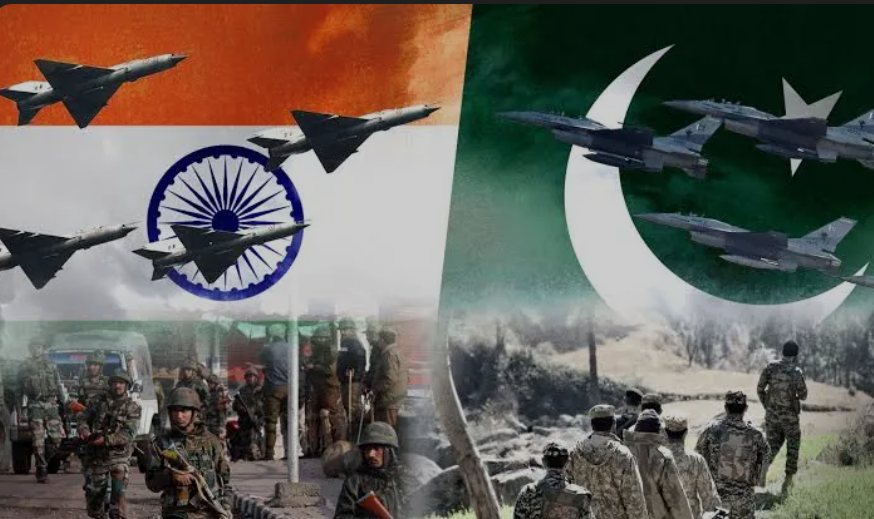🇮🇳⚔️🇵🇰 When Silence Ends in Fire: How Operation Sindoor Might Trigger the Next India Pakistan War
In an era where borders are patrolled not just by soldiers but satellites, one silent decision can detonate decades of tension. And that’s exactly what appears to have happened with Operation Sindoor, a rumored but highly sensitive Indian military offensive targeting Pakistan. As whispers turn into war cries, the region once again teeters on the edge of chaos.
From cross-border skirmishes to high-stakes diplomacy, and covert missions to public outrage, this is the most explosive chapter yet in the fraught relationship between India and Pakistan.
🔥 Flashpoint Kashmir: The Root of an Unyielding Conflict
The trigger for the latest escalation dates back to a deadly terrorist ambush in Kupwara, Jammu & Kashmir. Five Indian soldiers lost their lives in a meticulously planned attack allegedly carried out by Pakistan-backed militants.
The Indian response? A swift, strategic strike shrouded in secrecy—Operation Sindoor.
According to multiple defense insiders, Operation Sindoor wasn’t just a reactive measure. It was a calibrated military intervention aimed at neutralizing terror launchpads deep inside Pakistan-occupied Kashmir (PoK).
🩸 What is Operation Sindoor? Decoding the Mission That Could Rewrite India’s Defense Doctrine
A Silent Strike with a Loud Message
While no official statement has confirmed it, Operation Sindoor is believed to be a covert operation by India’s special forces, possibly supported by airborne drone reconnaissance and precision-strike missiles.
The mission reportedly involved:
- Surprise infiltration units from the Para SF.
- Real-time satellite and UAV surveillance.
- Targeted bombardments of terror camps and infrastructure.
The name “Sindoor”—a sacred red powder symbolizing marital commitment in India—was likely chosen to represent sacrifice, vengeance, and sacred duty. The red mark, in this context, is a symbol of national honor being defended with fire.
🧨 India Attack Pakistan: Precision Warfare or Provocation?
The operation has triggered an avalanche of reactions, both political and public. “India attack Pakistan” is now trending across social media, and the hashtag #OperationSindoor has garnered millions of impressions.
While Indian media celebrated it as a masterstroke, Pakistani state TV branded it a “baseless propaganda stunt” and denied the presence of any terrorist camps. However, aerial satellite images leaked by global defense analysts seem to suggest multiple targeted structures reduced to rubble.
The world is now watching—closely.
🌍 Global Reactions: Tension Spills Beyond Borders
U.S. Urges “Strategic Patience,” China Remains Silent
The international community has responded with alarm. The United States Department of State urged both nations to “exercise maximum restraint”, while the United Nations called for an urgent de-escalation.
China, a key player in South Asian geopolitics and Pakistan’s strategic ally, has so far maintained notable silence. However, sources indicate diplomatic backchannels are currently active between New Delhi, Beijing, and Islamabad.
Even the European Union expressed deep concern over the growing military buildup near the Line of Control (LoC), warning of “unintended consequences in a volatile region.”
🧠 Strategy Shift: Is India Embracing Proactive Offense?
From Balakot to Sindoor: A New War Doctrine?
Military analysts argue that Operation Sindoor marks a shift in India’s defense strategy. Moving from a “defensive doctrine” to a “proactive posture”, India appears to be adopting a policy of swift retribution.
Key features of this new doctrine include:
- Short-duration, high-impact operations.
- Avoiding full-scale war while achieving tactical victories.
- Leveraging cyber warfare, AI, and satellite mapping.
India’s modern military investments—from the Rafale fighter jets to domestically built drones—seem tailor-made for such surgical missions.
🎙️ On the Ground: Public Sentiment in India and Pakistan
War Drums vs Peace Pleas
In India, patriotic fervor has surged. Citizens and veterans alike have lauded the Modi government for showing “spine and strategy”. Newsrooms are flooded with panels of retired generals, each dissecting the surgical precision of Operation Sindoor.
In Pakistan, the narrative is starkly different. Protesters have taken to the streets claiming Indian aggression and calling on their military for a “befitting reply.” Pakistan’s Army Chief warned that “every misadventure will be met with iron hands.”
The mood? Explosive. Divided. Dangerous.
📺 Media Mania: How News Outlets are Framing the Conflict
#IndiaPakistanWar Trends Globally
Every major media outlet—from BBC and Al Jazeera to NDTV and Geo News—is now covering the story.
Popular headlines include:
- “India Strikes Back: Operation Sindoor Unleashed”
- “India Pakistan War Looms After Secret Military Operation”
- “India Attack Pakistan: Inside the Covert Mission Shaking South Asia”
With hashtags like #IndiaPakistanWar, #IndiaStrikes, and #StopTerrorNow trending globally, the media has become the battlefield of narratives.
📉 What’s at Stake: Human Lives, Regional Peace, and Global Economy
The consequences of an India Pakistan war would go far beyond the LoC:
- Trade disruptions could affect Asia and beyond.
- Tourism and aviation between the two countries would halt.
- Nuclear tensions could escalate in the worst-case scenario.
According to a study by Harvard’s Belfer Center, even a limited war between India and Pakistan could lead to millions of deaths and billions in economic losses.
🔍 FAQ Section
❓What is Operation Sindoor?
Operation Sindoor is a rumored covert military operation by India, targeting terrorist camps in Pakistan-occupied Kashmir as retaliation for an ambush on Indian soldiers in Kupwara.
❓Did India attack Pakistan recently?
Unconfirmed but credible sources suggest India launched a precision strike—codenamed Operation Sindoor—against Pakistan-based militant camps in PoK.
❓Is there going to be an India Pakistan war?
While no war has officially been declared, rising tensions, military alerts, and aggressive rhetoric have fueled fears of an impending India Pakistan war.
❓Why are India and Pakistan always fighting?
The primary reason is the long-standing Kashmir conflict, coupled with cross-border terrorism, religious tensions, and political rivalry since the Partition in 1947.
❓What has the global community said?
The UN, USA, and EU have urged restraint. Russia and China are reportedly mediating via backchannel diplomacy to avoid a broader conflict.
🏁 Final Word: The Red Line Is Thin—and Getting Thinner
The current situation between India and Pakistan is a powder keg. With Operation Sindoor marking a dramatic escalation, the threat of war is no longer hypothetical. The next few days will be critical, and every move will be closely watched not just in New Delhi and Islamabad—but in Washington, Beijing, and Moscow too.
In the digital age, wars are not only fought with guns but with data, narratives, and global perception. If peace doesn’t prevail, the fallout could be historic—and devastating.

















